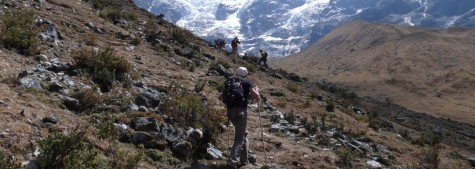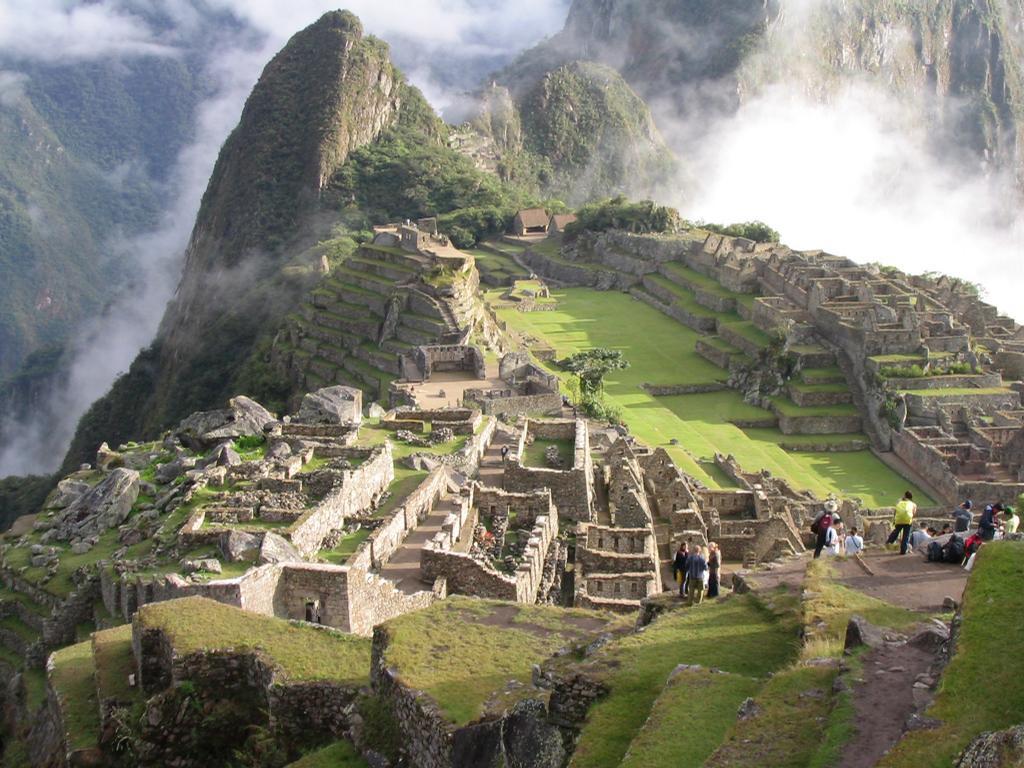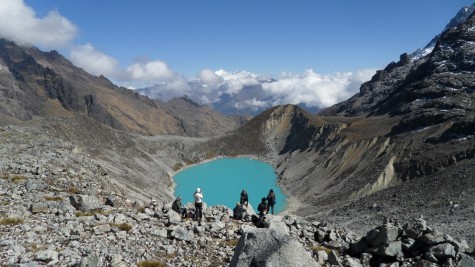When you go to Peru, the main attraction would be visiting Machu Picchu. There are several ways of getting there, there are the adventures ways where you can hike your way from Cuzco to Machu Picchu and less adventurous ways when you have less time where you take the bus or other transport straight to Machu Picchu. Since I got some time, I decided to take the adventurous part and hike my way to Machu Picchu. But instead of doing the traditional and well-known Inca Trail, I decided to opt for an alternative hike-route: Salkantay trek. There are several of reasons why I (kinda blindly tbh) choose for the Salkantay trek
Crowds
The Inca trail is one of the most popular trekking trails in South America. Popular also means a lot of people, meaning commercial. From what I’ve read on the internet, most people go on the Inca trail and there are parts where you actually hike in groups of people. People are talking about ant lines of people hiking towards the same goal. Others also complained about the fact that when you reach the campingsite you camp with several groups of people which could get loud at times. Another source told me that since there are many people on the Inca trail that causes it to be dirty and littered on the trail. I’ve done some hiking, both on a popular route and one less popular. I personally liked the less popular one, there were less people on the route and you could really “hear” and breath in nature and its surroundings. It was MA-GI-CAL!
Difficulty
Salkantay trek is named after the Salkantay Peak – Savage Mountain – which is located within the Vilcabamba mountain range, to the northwest of Cusco. Salkantay is one of the highest and most spectacular mountains in the Andes (6,271m/20,574ft). The trail itself runs approximately 89 km/55 miles through high Andean peaks, cloud forest, and steamy jungle. They advise this route for slightly more experienced hikers and people with a good physical condition. Although, don’t let that scare you, eventhough it’s harder, I’m sure it will feel more rewarding once you reach Machu Picchu at the end of the 5 day hike.
Sights
The difference between the 2 treks is that on the classic Inca Trail you’ll be able to see more archeological sites and historical artifacts. While on the Salkantay trek, you’ll have better landscape views and no arceological and historical sites. I personally don’t have a preference for sights, I just go with the flow and see what the trek has to offer. But I’m sure that whether its archeological or historical, I’ll be amazed at both.
Price
To be honest this also had something to do with my decision. The Inca trail being so popular, also costed a bit more than the Salkantay trek. The Inca Trail costs around 400+ USD while the Salkantay trek costs 250-300 USD. On top of that you get 1 day extra with the Salkantay trek! But in the end, there is no better trail. It all depends on what you look for and what your goal is. I’ve found a small question list which can help you findout which trail is better for you. 
Things for you to consider (in no particular order)
• Number of days – how many days do you have available to do your trek? You should make sure you acclimatize 2, preferably 3 days at altitude prior to trekking. So if you want to do a 4 day trek, you actually need 6-7 days in the region. Also, the longer a trek is the more remote experience you will be able to have! • Permits. Required for any trek that utilizes the Classic Inca Trail to Machu Picchu. Permits should be purchased 3-4 months in advance. • Your interests – what would you like to see and do on your trip? Do other tourists bother you? Read the trek descriptions carefully for a good indication of what you will see. • Living Culture vs Ruins vs Scenery– treks have different strengths and weaknesses. Some treks have it “all” but others have strengths and weaknesses. • Trek difficulty & your fitness – these two items are directly related. For a person of average fitness the Choquequirao treks will be exceptionally hard – for someone of top fitness and prior trekking experience, then Choquequirao will be fine. We attempt to describe trek difficulty as clearly as we can, but ultimately it depends on your expectations of what “difficult” is – and how fit you are. You book the trip, and you are the person that has to hike it! Try to be realistic about your fitness and also be aware that generally, treks in the Andes are more difficult than you think!


Leave a Reply